30th Anniversary of the Fall of the Berlin Wall
November 6th, 2019The Berlin Wall stood in the center of Berlin, Germany, from 1961 to 1989. It acted as a physical symbol of the divide between East and West, not just in Germany, but between Western European democracy and Eastern European communism after the end of World War II. It was a literal “Iron Curtain,” in Winston Churchill’s words, and its fall in the late 1980s coincided with the end of the Soviet Union and Eastern European communism.
Materials related to the Berlin Wall at Spencer Research Library focus on its meaning soon after it was built in the early 1960s and its obliteration in the late 1980s and early 1990s. To commemorate the fall of the Berlin Wall thirty years ago this month (November 9, 1989), we thought we would share some of the more interesting pieces we have at Spencer Research Library related to this topic.
Holland Roberts, then director of the American Russian institute in San Francisco, wrote about the wall soon after it was built, in 1962. He argued that it was to protect East Berlin and East Germans from the militarism rising in West Germany, led by former Nazi officers. “The Wall will come down when the two Germanys disarm and form the core of a neutral peaceful zone in the heart of Europe,” Roberts wrote.
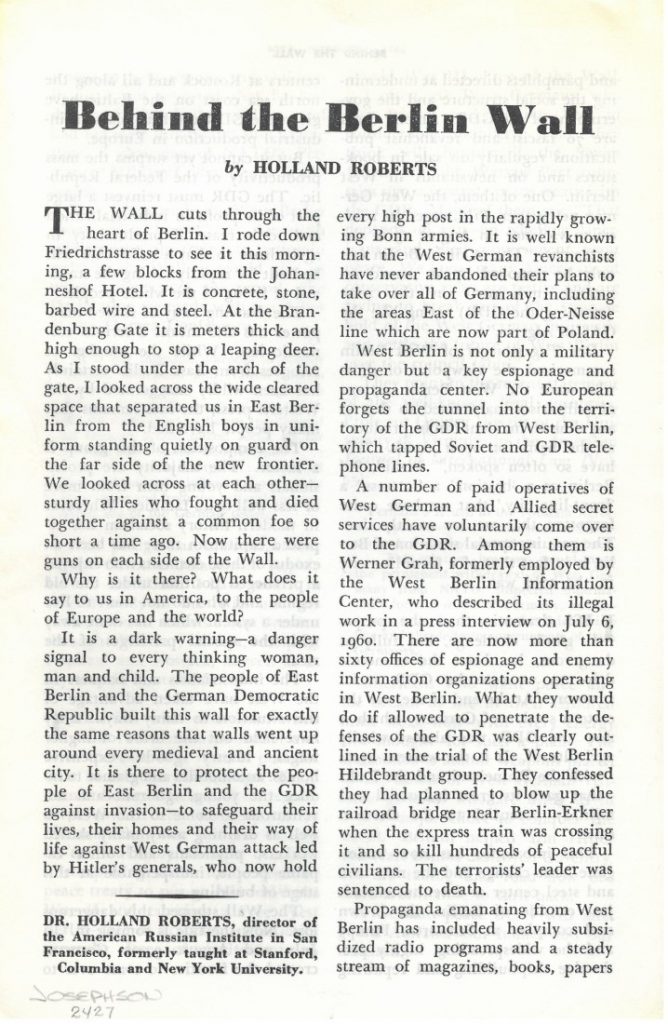
American journalists Margrit and John Pittman also wrote about the Berlin Wall soon after its construction. They too focused on West German propaganda against East Germany, as well as German perceptions of Americans visiting or stationed in their divided country.
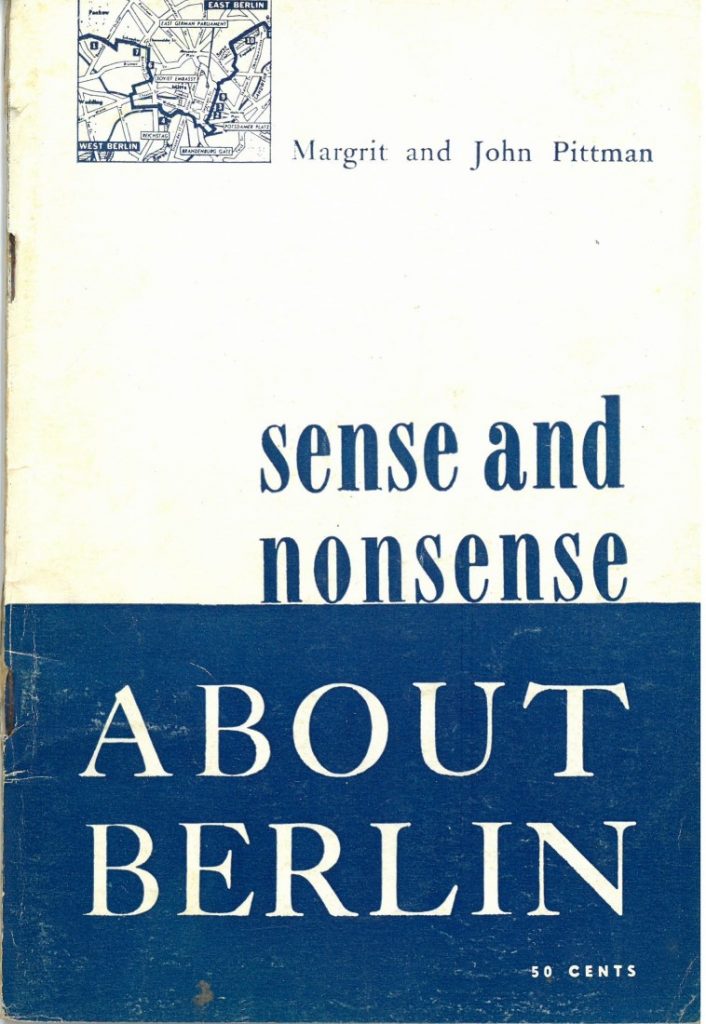
The items in Spencer’s collections from when the Berlin Wall came down in 1989 seem more hopeful than these earlier written works. For example, Bob Swan’s Citizen Diplomacy Archives collection focuses mostly on the relationship between the United States and the Soviet Union rather than the relationship between the German Democratic Republic (GDR or East Germany) and the U. S. However, Mr. Swan donated a chunk of the Berlin Wall as part of his collection. Throughout the 1980s, East Germans increasingly filed requests to immigrate to West Germany; with the (false) announcement of a new emigration policy on November 9, 1989, thousands rushed the Wall. Thereafter, individuals began picking off pieces such as this one to keep as souvenirs until the wall was finally dismantled systematically in the summer of 1990.
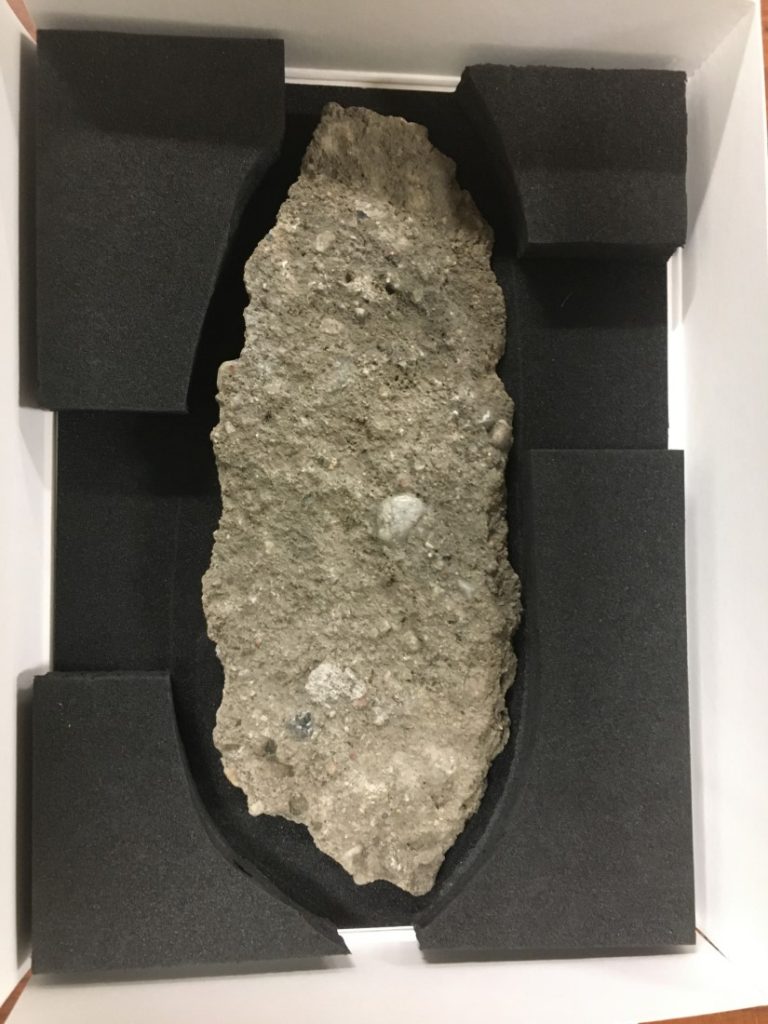
Professional photographer Gary Mark Smith spent some time in Europe in 1990 and took pictures of the streets in Berlin before the wall was entirely dismantled. He also took pictures of proud Germans waving a reunited German flag in Cologne.
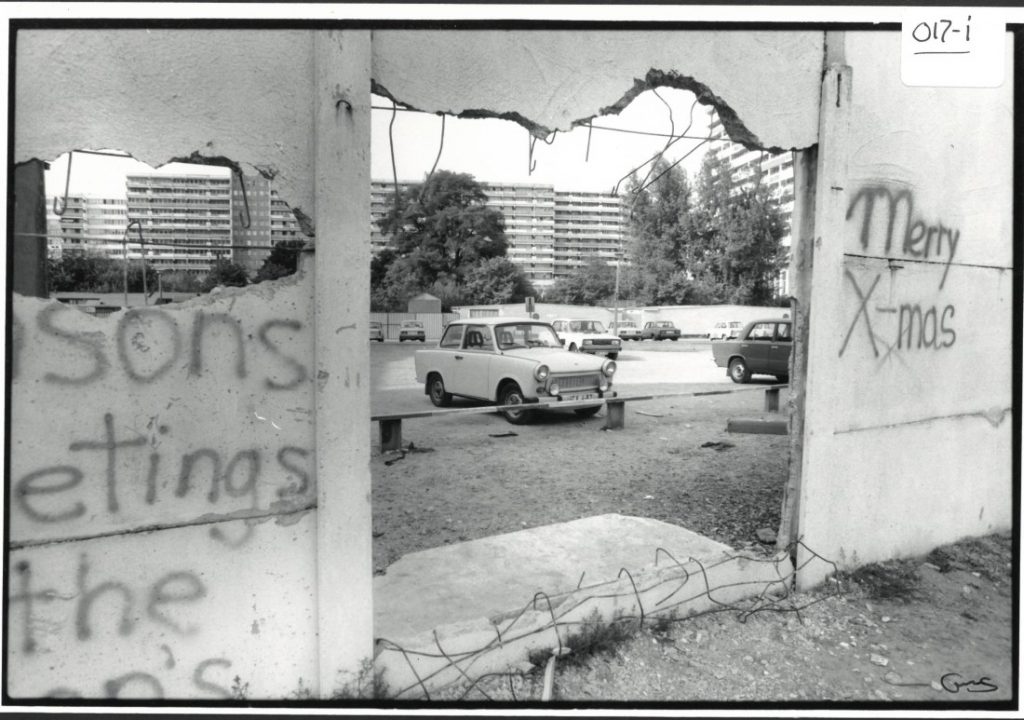
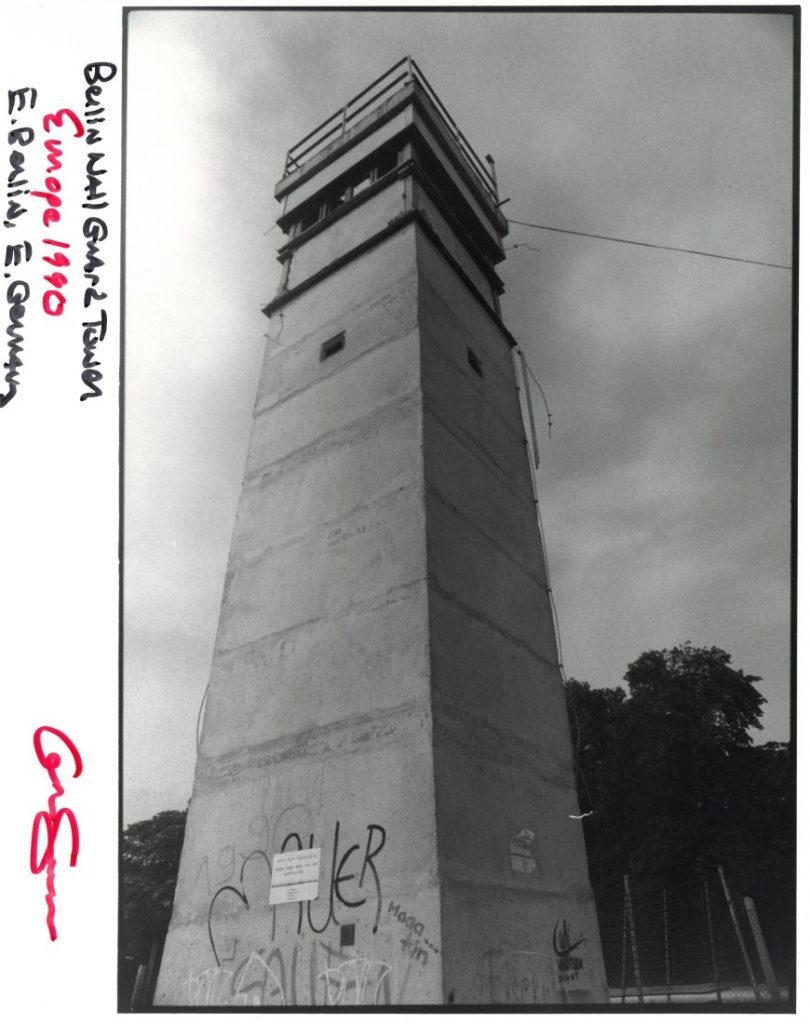
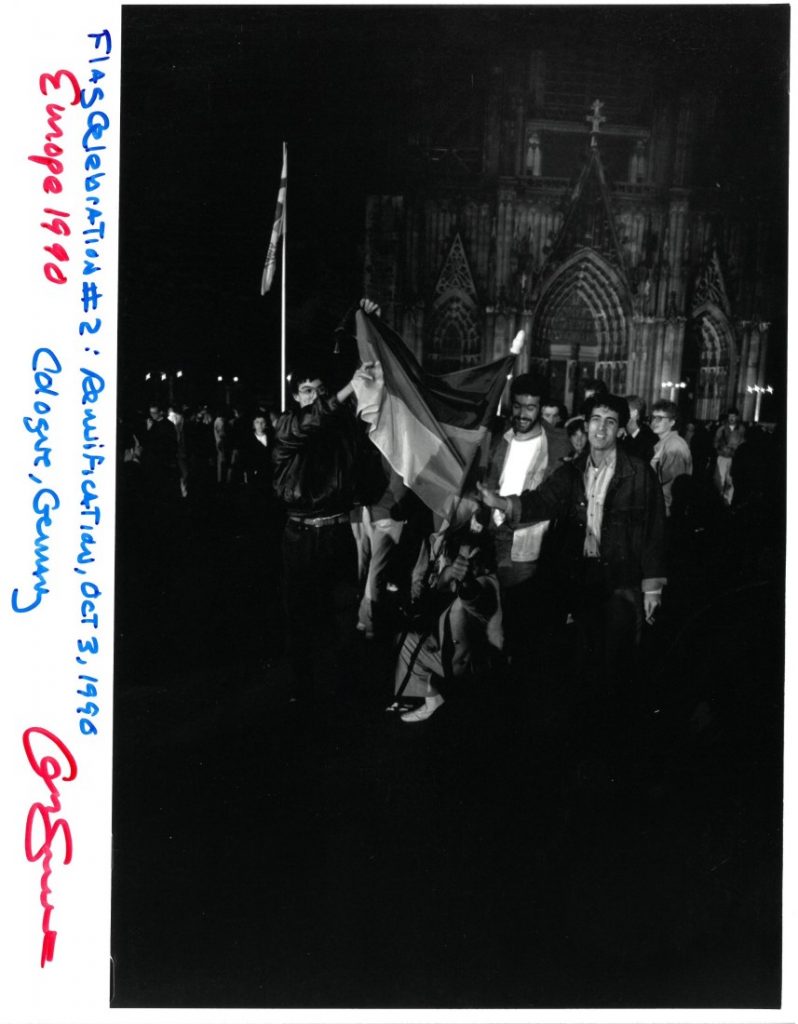
The fall of the Berlin Wall is one of those globally historic moments, the kind that has people asking each other “Where were you when….?” Were you alive when the Berlin Wall fell? Do you remember what you were doing that day in November 1989 when you heard the news?
Marcella Huggard
Archives and Manuscripts Processing Coordinator
